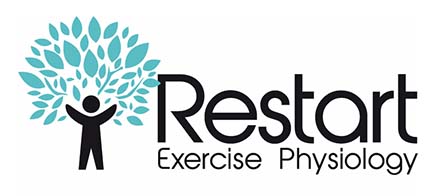Perhaps the most important element of our role as Exercise Physiologists is finding the right type of exercise for each individual we see. To get this process right, we need to consider a vast number of factors, including the individual and their personal preferences; their injury and/or condition history; their age and what’s appropriate based on their current health status; and their goals, and what they want to achieve.
Spending our time working in the gym environment, we tend to see certain trends come and go, exercises that seem to be popular (rightly or wrongly), and unfortunately, some common mistakes.
To help you avoid the pitfalls of common exercise and gym-based mistakes and ensure continued progress towards your health and well-being goals, the team and I have collated our opinion and expertise on the number one workout mistakes people make – and how to avoid them.
Luke’s #1 Mistake – Not focusing on exercise technique closely enough
 In my opinion, when it comes time to get moving, exercise technique must be considered before all else. All conceivable positive results can be compromised by poor technique, and not performing each type of movement or exercise not only correctly, but the best way. On top of this, your likelihood of injury will vastly increase should you be performing exercise in a compensatory, uncontrolled or inadequate manner.
In my opinion, when it comes time to get moving, exercise technique must be considered before all else. All conceivable positive results can be compromised by poor technique, and not performing each type of movement or exercise not only correctly, but the best way. On top of this, your likelihood of injury will vastly increase should you be performing exercise in a compensatory, uncontrolled or inadequate manner.
You don’t need me to tell you what an injury setback will do to not only your physical progress and results, but your motivation levels, quality of life and mental health.
Each exercise we perform has a specific reason – perform this movement properly for a specified number of repetitions, for a specified number of sets, over a specified amount of time, with a challenging amount of load, and desired results will follow.
However, before load is introduced into the equation, you must be able to perform the movement adequately and with total control. As mastery of a certain movement is achieved, external load can be introduced to make the exercise more challenging and improve your rate of strength/endurance/power development.
When it comes to control (which can also be viewed as ‘stability’) when performing exercise, slowing down and monitoring each phase of the movement is key. I often ask my patients to perform each repetition for a period of 5 seconds – if you can control the movement for this span of time, it usually qualifies you to safely progress in terms of load and volume (aka more reps and sets). Increasing the time that your muscles and connective tissue are under tension by going slower, will also likely improve your results.
Tom’s #1 Mistake – Not following a plan
 One of the mistakes I see time and time again is not following a structured exercise program. Like many endeavours in life, progress is best attained when following a plan, centred around clear and achievable goals.
One of the mistakes I see time and time again is not following a structured exercise program. Like many endeavours in life, progress is best attained when following a plan, centred around clear and achievable goals.
One of the fundamental principles shown to produce desired fitness outcomes is a concept referred to as ‘progressive overload’. In simple terms, progressive overload refers to a gradual increase in intensity of an exercise program over time. Well-constructed exercise programs use different methods of progressive overload to ensure steady progression towards your goals.
Furthermore, recording progress session to session allows the individual to ensure they are on track, and identify if any program modifications need to be made.
Exercising without a plan, and with no clear recording of what was completed last session, opens the door for under/over-training and greatly increases risk of injury. Exercise programs prevent under-training as they incorporate evidence-based methods of steady progression. Similarly, this same concept prevents over-training as progression is gradual, and recovery phases are built into training programs to allow for adequate recovery whilst minimising injury risk.
Not all exercise programs are built equal. It is important to consult with an experienced exercise professional who can provide you with an individualised exercise program that is specific to your goals. If done correctly, a good exercise program can provide notable and lasting improvements in health and fitness.
Nicola’s #1 Mistake – Not warming-up sufficiently
 In my opinion the number one mistake you can make in the gym is to not complete an adequate warm up. Warming up prior to a strength training session is important for many reasons. It reduces risk of injury, preps your muscles for heavier weight, and can improve mobility and stability.
In my opinion the number one mistake you can make in the gym is to not complete an adequate warm up. Warming up prior to a strength training session is important for many reasons. It reduces risk of injury, preps your muscles for heavier weight, and can improve mobility and stability.
An adequate warm up should increase your heart rate, increase blood flow to your muscles (and therefore improve oxygen flow to you muscles) and primes the pathways between your nervous system and muscles, creating more coordinated and efficient movement patterns.
Warming up can consist of things like, light aerobic exercise (walking, cycling, rowing), dynamic stretching (moving a joint through its full range of motion), or activation-based exercises. Prior to strength training, I recommend activation-based exercises. For me, this includes activating a selection of deep stabilising muscles you’re about to train, for example, activating your deep core and hip stabilisers prior to performing a back squat.
If you’re unsure whether your warm-up is adequate, or just don’t really know where to start, come see us at Restart for a personalised warm-up to safe-proof your workouts and take your results to another level.
Seth’s #1 Mistake – Going too hard too soon
 A common mistake I see in both beginner and experienced gym goers, is the tendency to start or return to the gym at an unsustainable rate. This can lead to injury, fatigue onset or long-term training inconsistency.
A common mistake I see in both beginner and experienced gym goers, is the tendency to start or return to the gym at an unsustainable rate. This can lead to injury, fatigue onset or long-term training inconsistency.
My tip for overcoming this barrier is by taking baby steps. This might look like attending the gym 2-3 times a week to start with, and then progressing to additional workouts after for example, 4 weeks of consistent training. This will allow you to create an effective routine that fits within your daily schedule whether that be school, work or other commitments.
Often when people need to suddenly cease training, it can be due to inadequate recovery and ‘over-training’. This can represent as feeling fatigued and low on energy, or experiencing excess muscle soreness. This is even more common for people who are new to exercise, and those who don’t have a great deal of experience training at higher volumes.
Remember, results are yielded through long term consistency, so don’t get defeated if you don’t see any quick results. To achieve sustainability in terms of regular physical activity, make sure you allow yourself to ease into an enjoyable, time-efficient and achievable routine within the gym. And schedule adequate rest and recovery into your weekly workout routine to maximise your progress and results.
Health professionals such as myself can help get you through that initial start-up period and equip you with the knowledge, skills and accountability that you need to get the most out of your time in the gym. Good luck!
Nick’s #1 Mistake – Ego-lifting
 Ego-lifting in the gym, often characterised by individuals lifting weights beyond their capacity with improper form, poses serious risks to one’s health and well-being. When individuals prioritise lifting heavy weights to showcase strength or impress others, they compromise proper technique and increase the likelihood of injuries. This can lead to strains, sprains, and more severe issues such as muscle tears or joint damage.
Ego-lifting in the gym, often characterised by individuals lifting weights beyond their capacity with improper form, poses serious risks to one’s health and well-being. When individuals prioritise lifting heavy weights to showcase strength or impress others, they compromise proper technique and increase the likelihood of injuries. This can lead to strains, sprains, and more severe issues such as muscle tears or joint damage.
Ego-lifting not only impedes progress by promoting poor biomechanics but also fosters a competitive atmosphere that may deter individuals from focusing on gradual, sustainable fitness goals.
The psychological pressure to constantly lift heavier weights can contribute to a mindset that neglects the importance of consistency, steady and sustainable progression, and overall health in fitness pursuits.
Health professionals, such as Accredited Exercise Physiologists (AEP), play a crucial role in addressing and preventing the negative consequences of ego-lifting. We can assess an individual’s fitness level, design personalised workout plans based on their capabilities, and educate them on the significance of proper form and progression. We can also provide guidance on incorporating functional exercises and mobility work to enhance overall fitness and reduce the risk of injuries. By fostering a supportive and educational environment, health professionals help individuals shift their focus from ego-driven lifting to a holistic approach that prioritises long-term health, fitness, and well-being.
Conclusion
Being aware of, and avoiding the above common mistakes above are vitally important in both reducing injury risk, and achieving your health and fitness goals. An injury setback can be demoralising, as can a plateau where your hard work seems to be reaping little to no reward.
If you’d like help planning and designing your ideal workout plan; need a refresh on a personalised warm-up; or require another pair of eyes to ensure your exercise technique is sound, contact Restart today. Our specialty lies in simplifying exercise to ensure results!

Hi Luke
Thanks for that info. I am continuing with hydrotherapy in our home pool at the moment. It is very gentle but getting results. I am glad to say my knees are improving at last, at last!! I am back on the bike albeit an ebike. One of the things I did along the way was to learn to trigger my VMO first so I did not pull the knee cap sideways.
Cheers
Michael
Hi Michael,
Great to hear from you mate! And I’m so glad to hear that you’re seeing improvements with your knees, I know it’s been a long process for you.
Remain consistent as I know you will, and hopefully we can link up again at some stage in 2024. If you need any advice don’t hesitate to reach out.
Luke